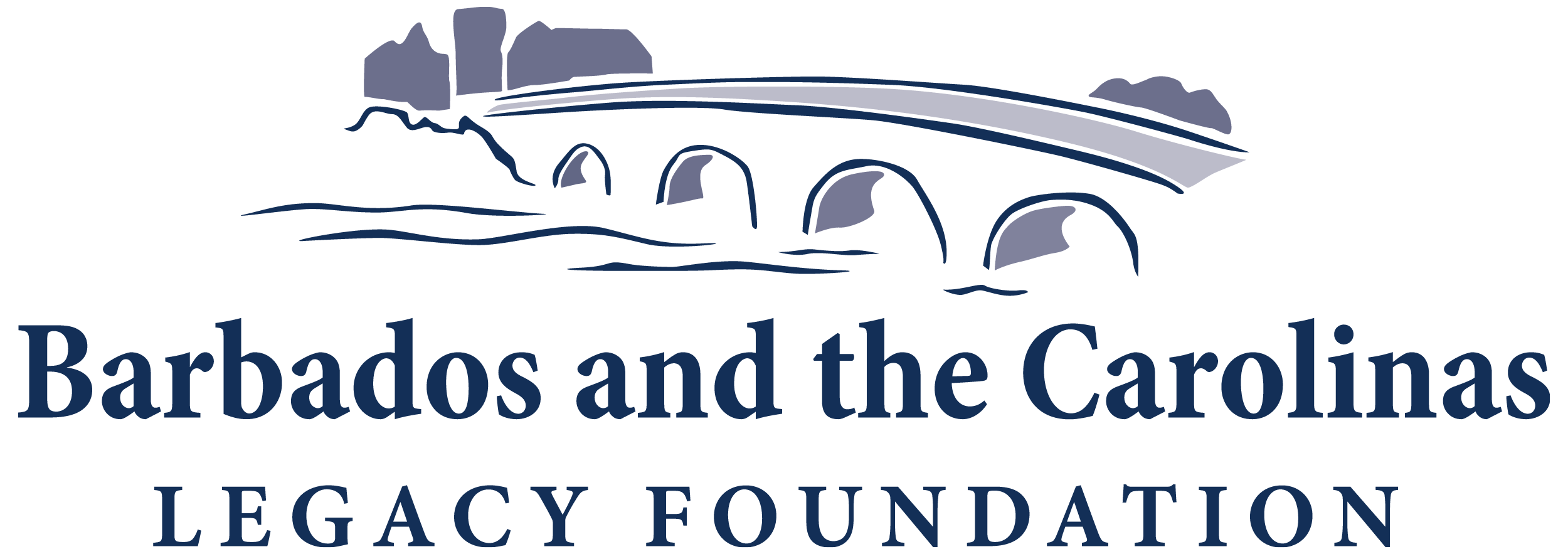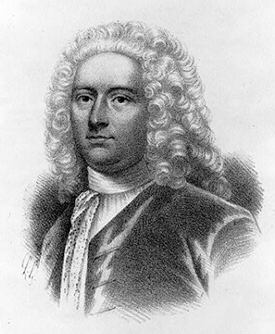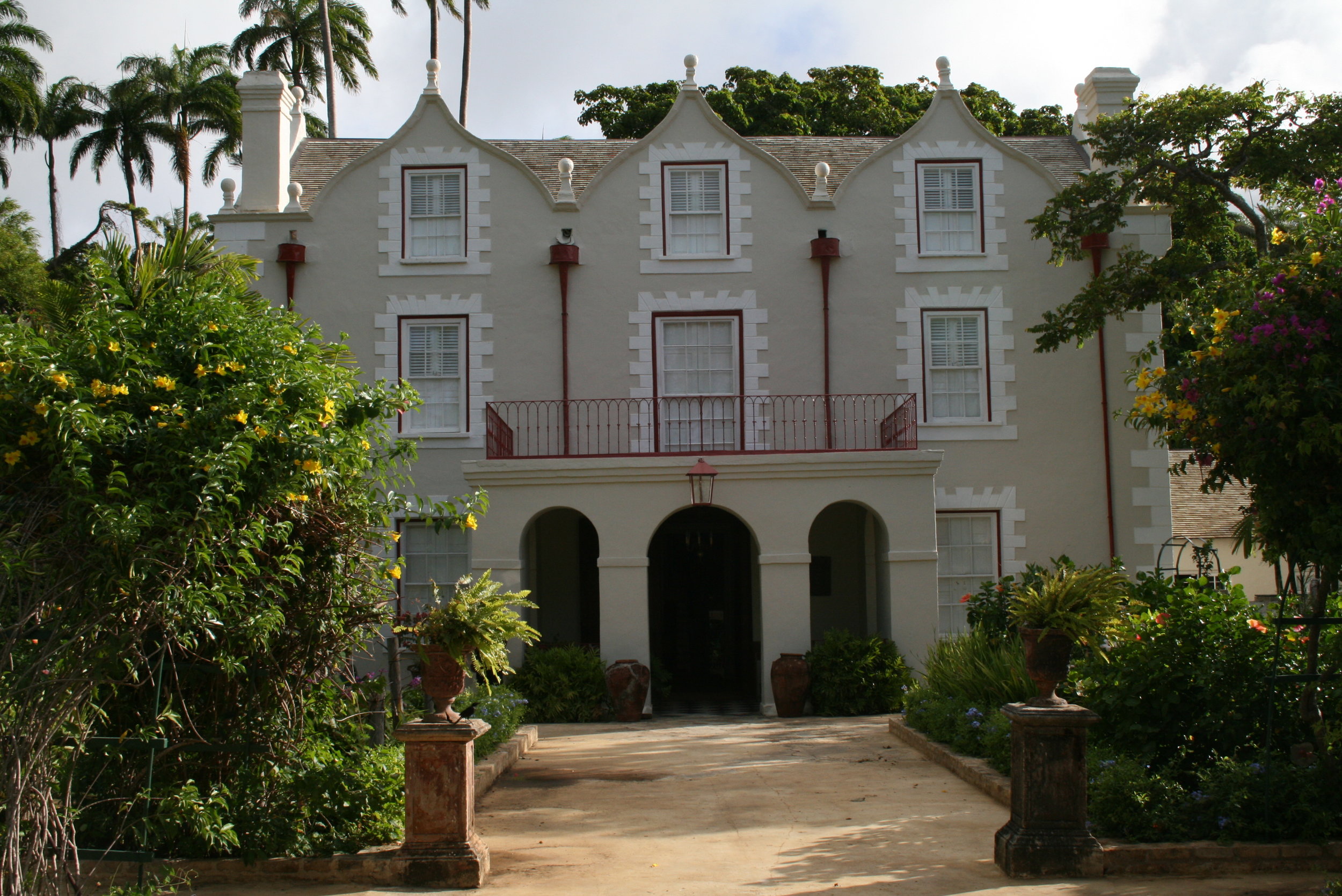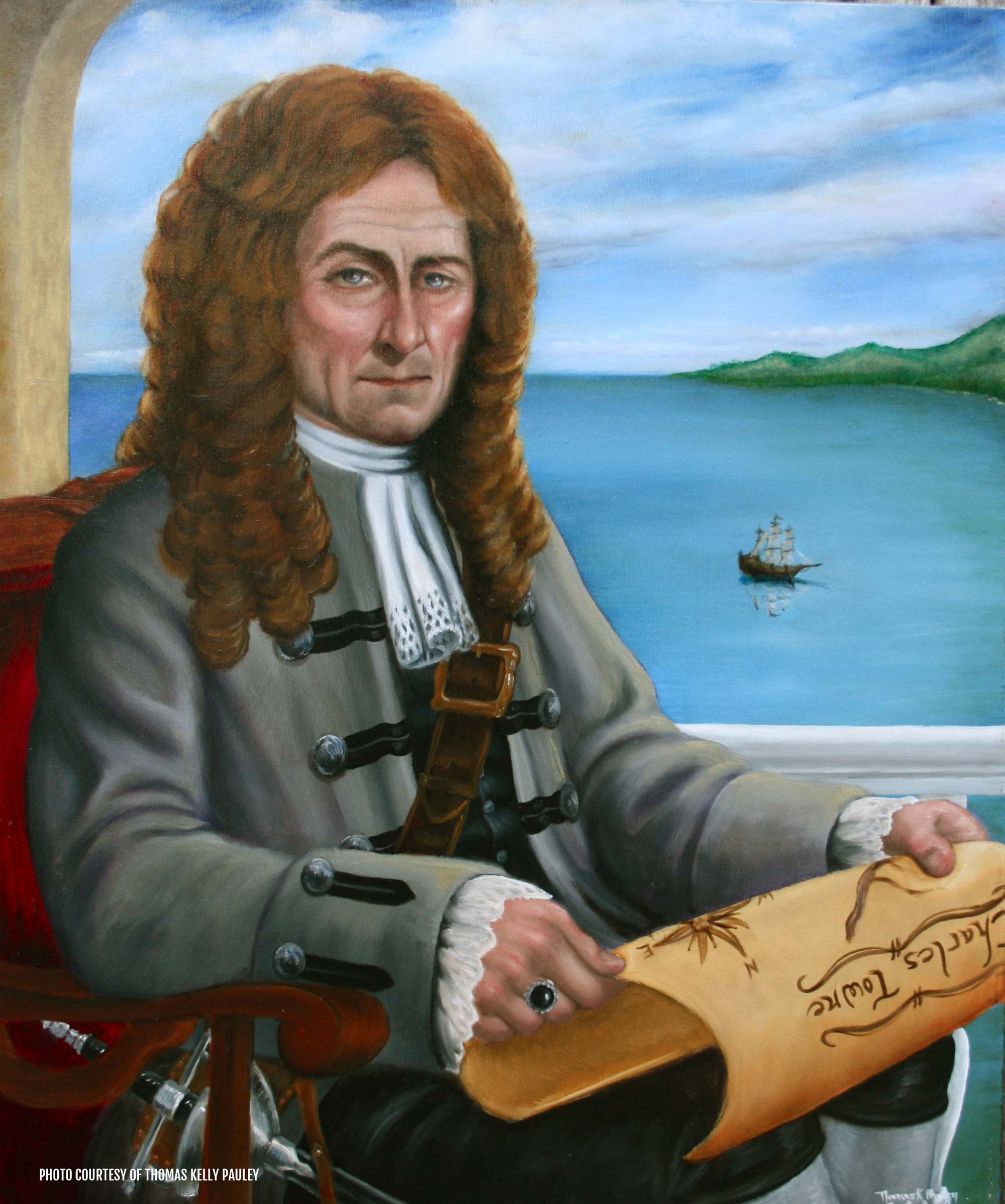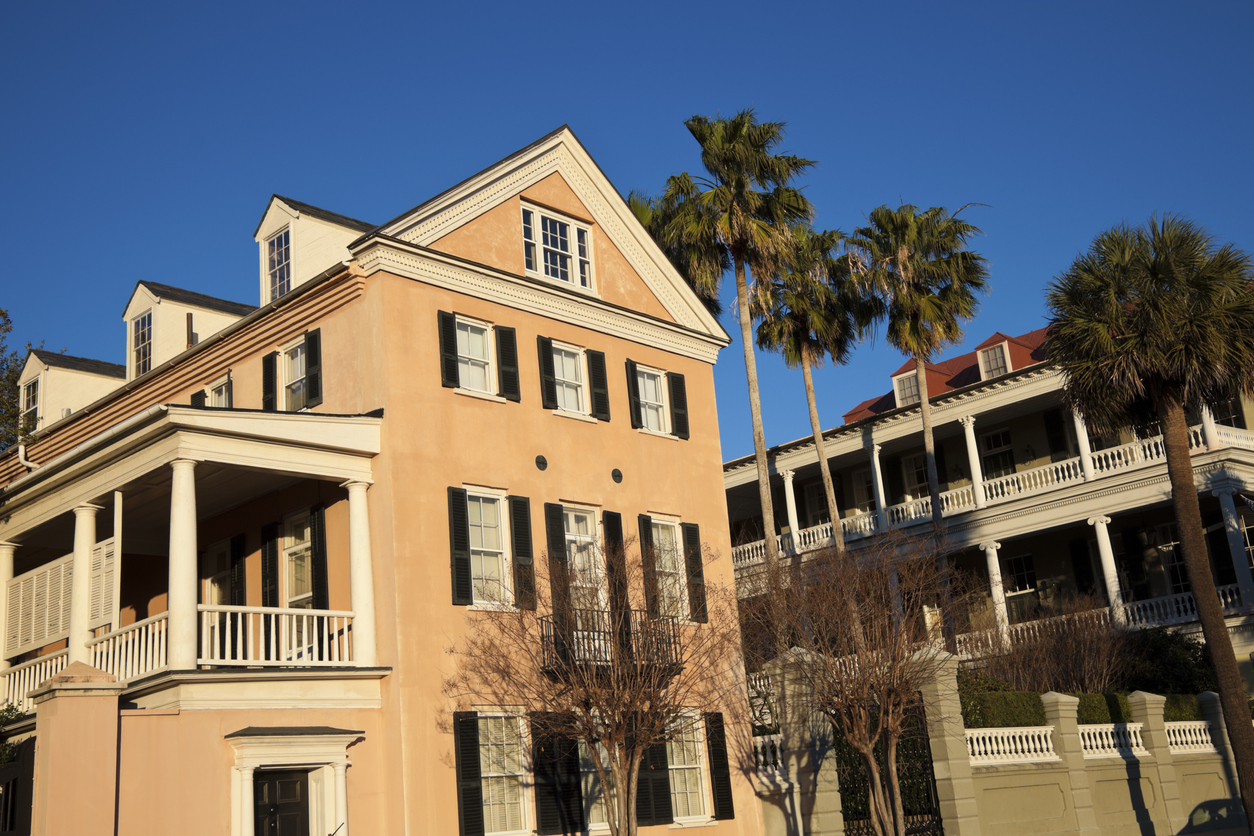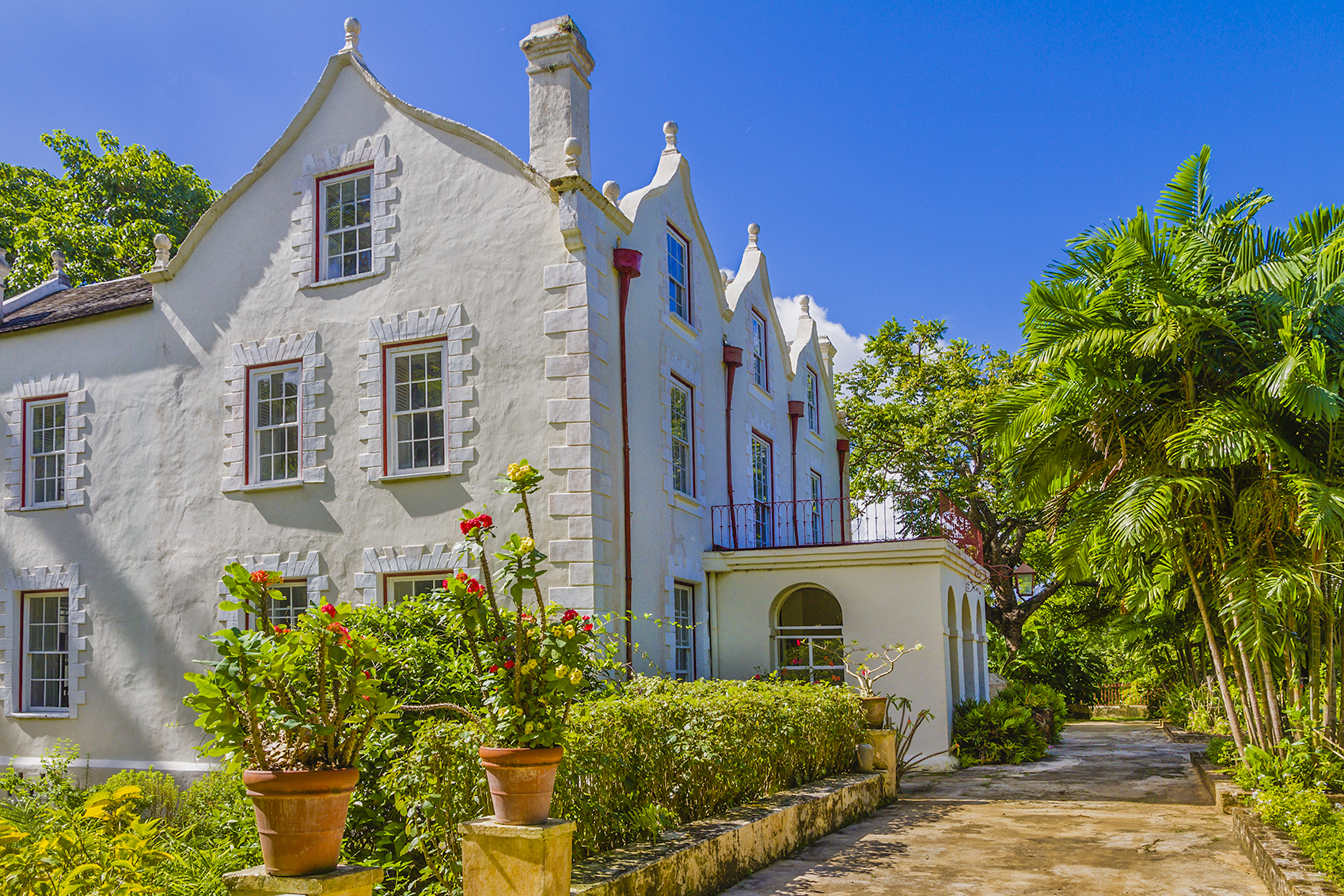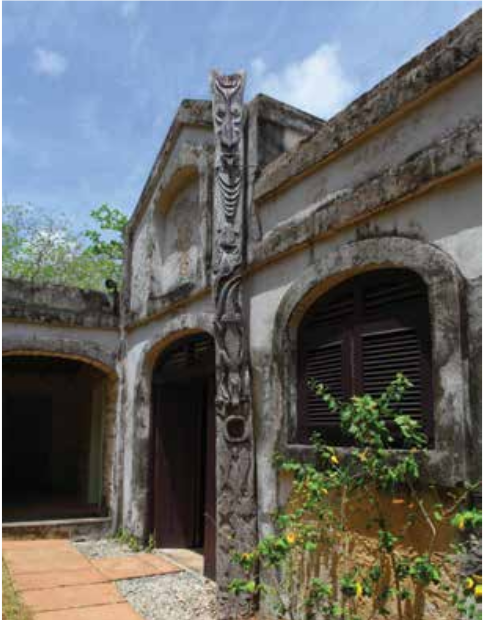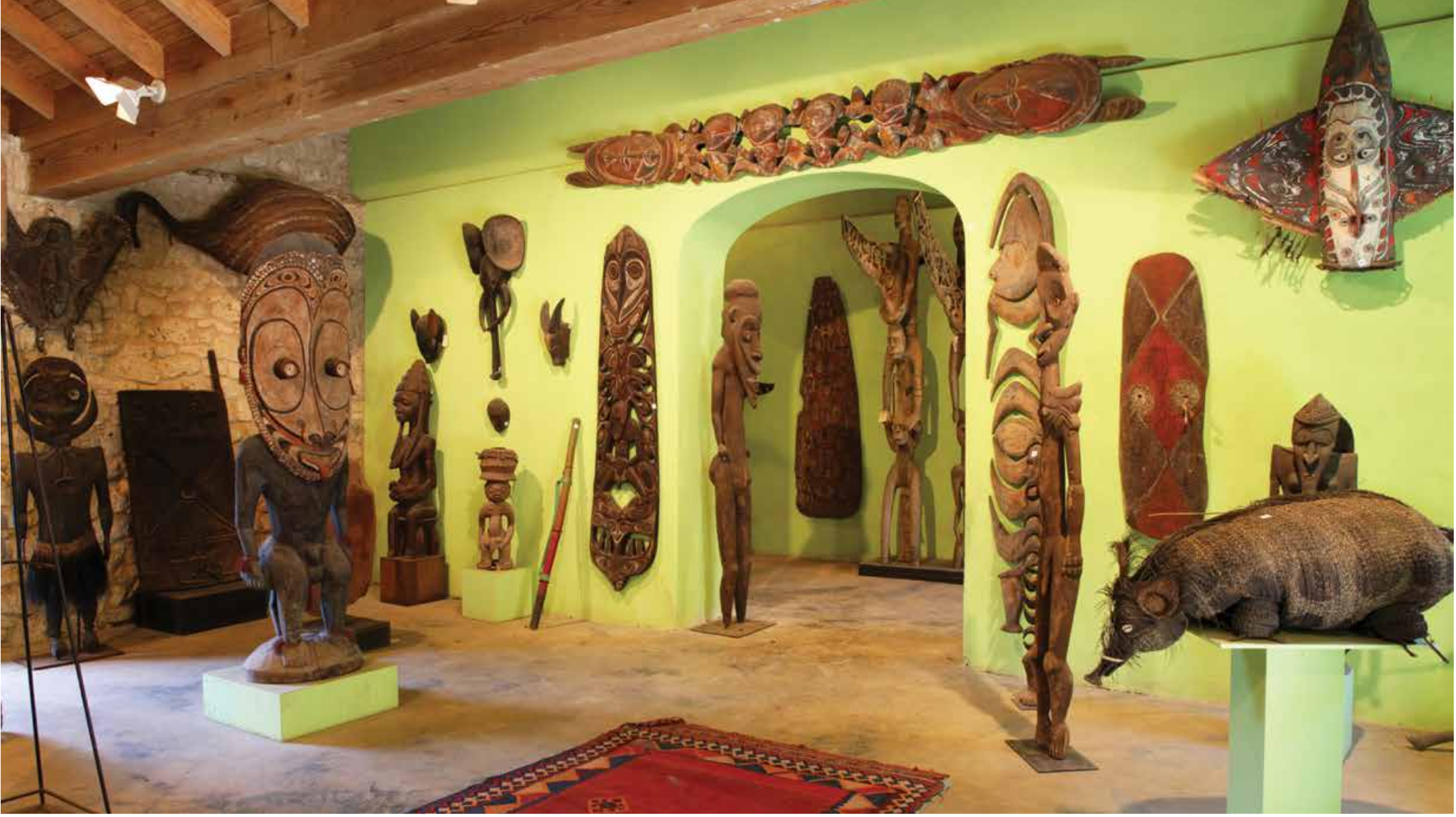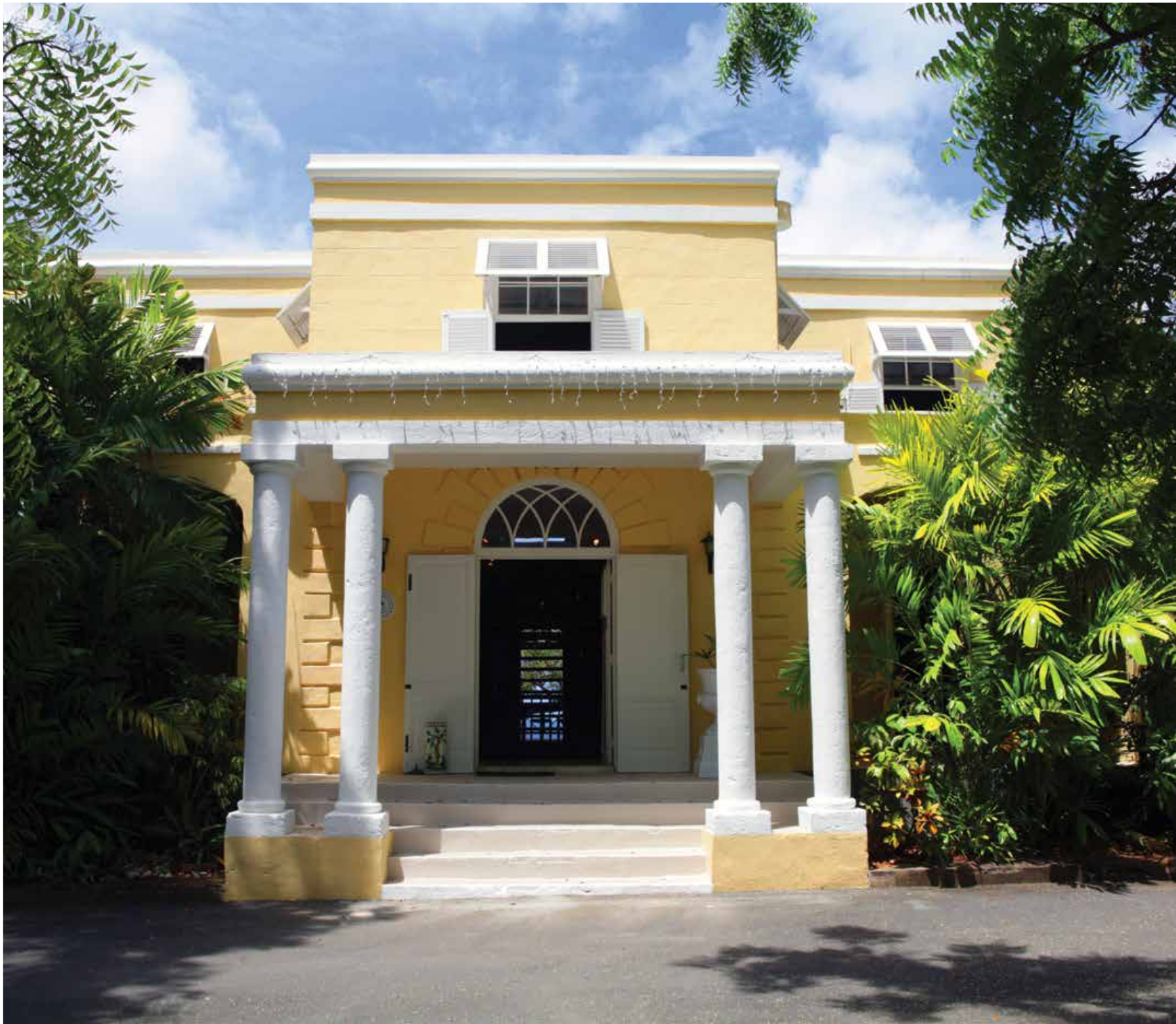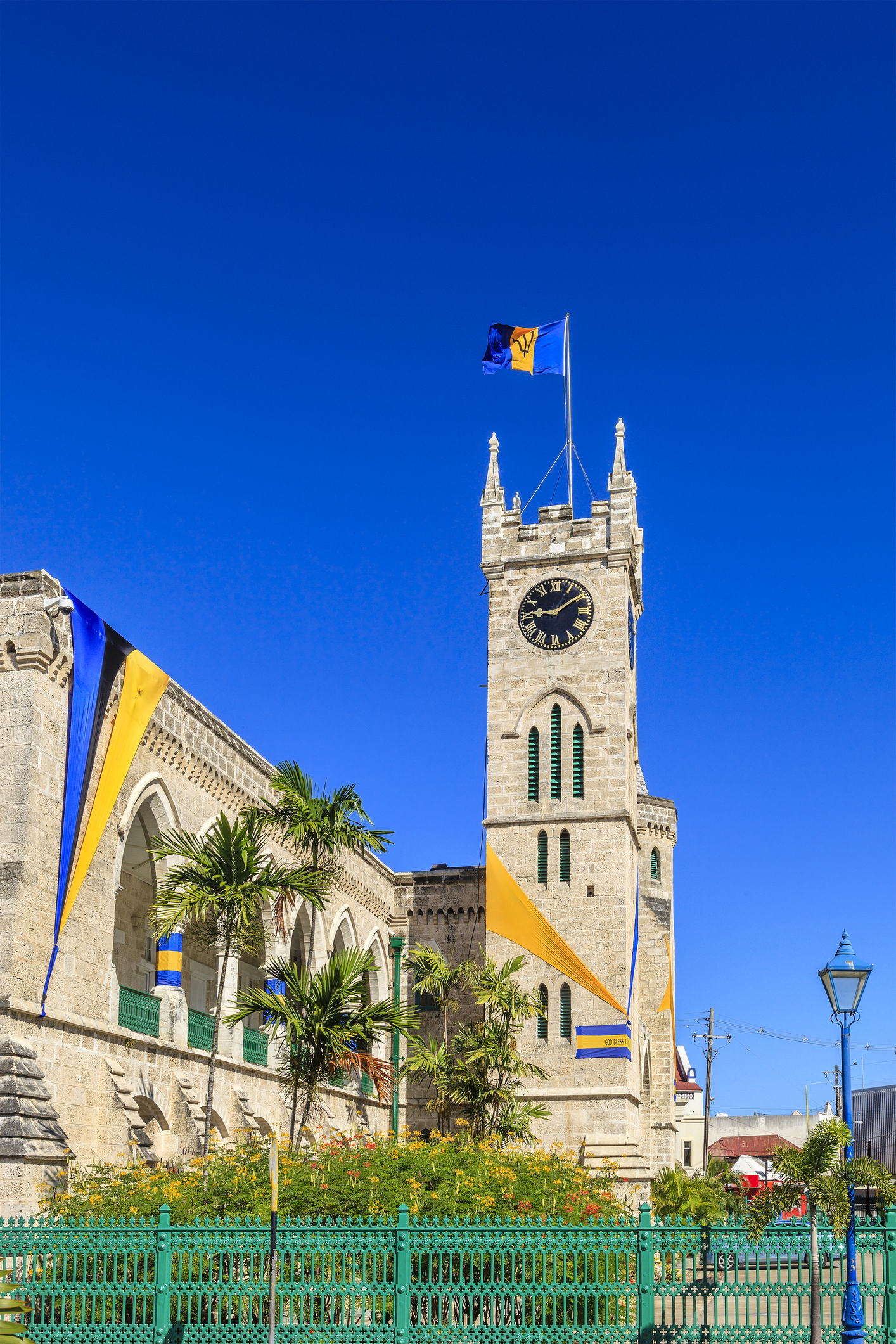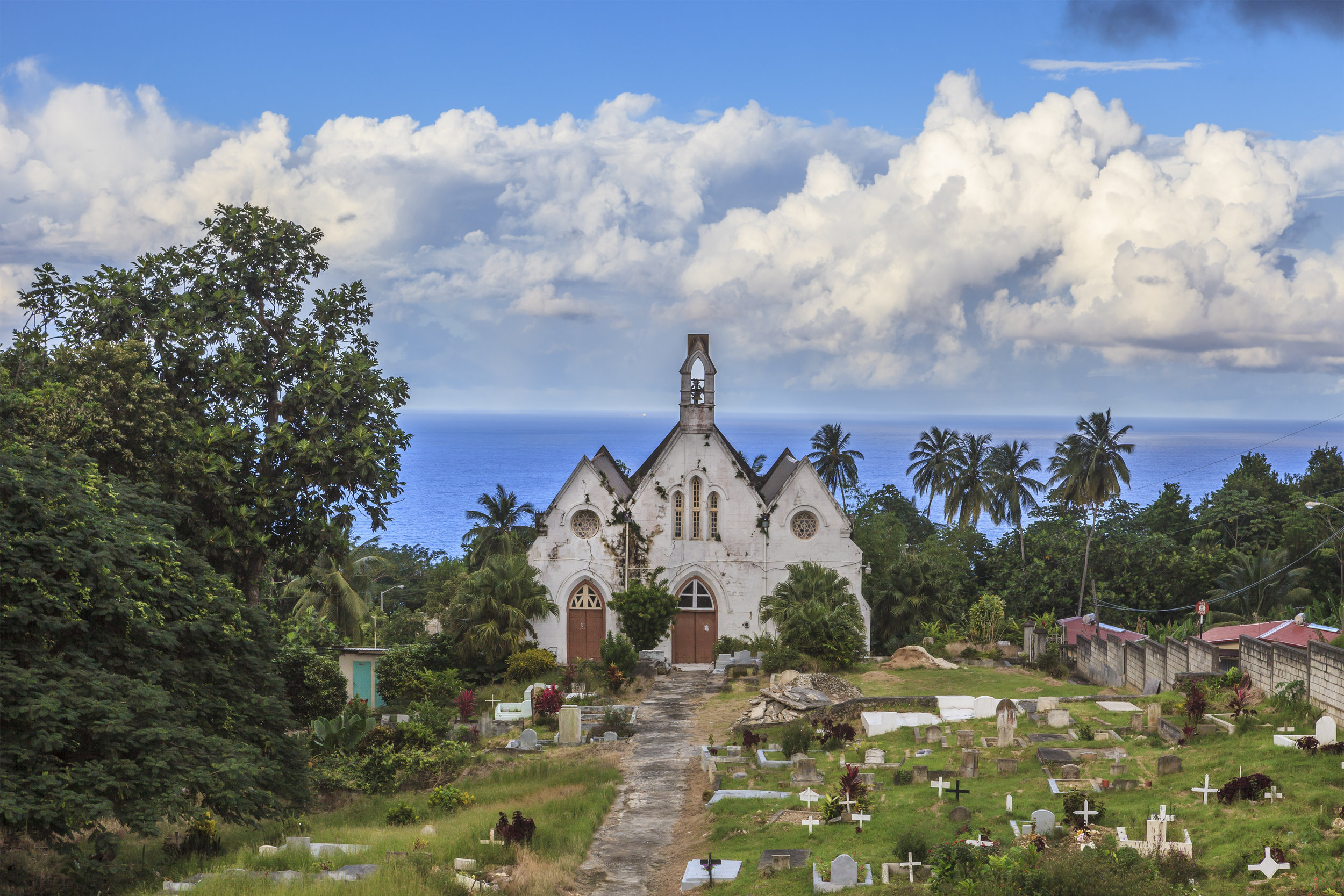People, Pirates, Places and Partnerships: The Barbados-Carolina Connection
Senator Sir Henry Fraser
Professor Emeritus, University of the West Indies & Chair, Preservation (Barbados) Foundation Trust
April 9, 2015, 7 pm, College of Charleston, Maybank Hall
Master of Ceremonies: Michelle McCollum, Mrs. Rhoda Green and Mr. Markley Wilson, Distinguished guests all, brothers and sisters and cousins - close cousins and tenth generation cousins - of Barbados and Charleston.
It’s a privilege, a pleasure and a huge honour to be back in Charleston for the eighth time. .. in this beautiful, historic and friendly place, with which I seem to have so many mysterious connections – When my wife and I moved into our home 36 years ago, we were given a telephone number 1 6 7 0 … sixteen seventy … I didn’t know then that it was the year of successful settlement of Charles Town by the Barbadian expedition. When I asked my historian friend for any interesting historical facts about my home, Upton, he said it was the birthplace of Stede Bonnet – our, and your notorious Gentleman Pirate. And so my on-going celebration of the Barbados Carolina Connection, beginning with the book of that name and my close friendships in Charleston, all seem pre-ordained by these numbers, dates and people!
My first visit to Charleston almost 30 years ago was orchestrated by Markley Wilson, who was then Director of the Barbados Tourist Board offices in New York. He came to Charleston and discovered the connection for himself. And so he organised our visit with my good friend the historian Warren Alleyne, in 1986. I had earned a certain reputation as an architectural historian with my books Historic Houses of Barbados and Historic Churches of Barbados; I also had Drayton ancestors; and I have a passion for the English language and its variations. The result was this book – The Barbados Carolina Connection – exploring the settlement via Barbados, the founding settlers, the architectural history and the similarities between the Gullah dialect and Barbadian or Bajan dialect. And so this visit comes full circle, as I gather more data and photos for a new, expanded edition of the book – for a new generation of Barbadian – Carolinians!
As an amateur but passionate historian, heritage guide and tourism consultant, I always recognise that history is truly HIS Story and HER Story …. The stories of people … and so I will use the context of our first edition of The Barbados Carolina Connection to discuss first The People – some of the key people involved in the settlement – then some of the colourful Pirates, especially my personal Pirate – the Gentleman Pirate Stede Bonnet and Edward Teach or Blackbeard; some of the Places in Barbados and Charleston that are legacies of the connection, and the alleged architectural connections – especially the Single House; and finally the Partnerships – past and present… between the Paradise of Charleston and the Paradise of Barbados.
First, Sir John Colleton, the man with the vision who started it all. Who was he? He was a wealthy merchant and ship owner, a high status colonial adventurer and the chief visionary coloniser of the Carolinas; a Royalist and Parliamentarian in turn – this was Sir John Colleton, whose first plantation in Barbados is now the fabulous home to the extraordinary art collection of an Australian geologist, BP Director and eclectic collector, the late Frank Rickwood .. and it’s for sale!
Sir John was a prominent merchant in Exeter, engaged in the profitable wool trade. He generously supported King Charles the First in the English Civil War, to the tune of some forty thousand pounds – many millions in today’s currency – and he lost a goodly part of his fortune. By 1647 he saw the possibilities in Barbados, where Sir James Drax’s experiments in growing sugar were reaping huge rewards, and he bought, sight unseen, a small plantation called The Ridges, overlooking the West Coast, North of Speightstown – now called Colleton, in St. Peter, and later a second Colleton plantation in St. John. By 1650 he took ship to Barbados, and played a major role in the Barbados branch of the Civil War – changing sides, it has been said, with great political skill! He returned to England in 1660, was among twelve Barbadians knighted by the newly crowned King Charles the Second for their loyalty. He was appointed to the Council for Foreign Plantations, a position he exercised to his benefit. Barbados had surplus people in this decade, while colonial settlement in America was restricted to Virginia and New England. In those days of primogeniture, when the eldest son inherited everything, and other sons went into the army or the priesthood, Sir John had a problem – what to do in Barbados with all of his sons!
Among his friends was Anthony Ashley Cooper, Baron Ashley of Wimborne St. Giles, later first Earl of Shaftesbury. In 1663 Sir John, now a baronet, wrote to the King, proposing a charter for “the rich and fertile province” in America to be known as Carolina – the Latin name for Charles – to a conglomerate of eight noblemen. The most influential of these eight was the Earl of Shaftesbury and the Shaftesbury papers are, like the desired province of Carolina, rich and fertile – a splendid source of the history of the settlement.
Lord Shaftsebury’s life story is hugely fascinating. He was one of the most powerful figures in England in the first two decades after the Restoration. Politically, he’d been a Royalist, then a Cromwell supporter, and then a Royalist again! He stood for constitutional monarchy, Protestant succession, civil liberty, religious tolerance, the rule of Parliament, and the economic expansion of England. When he met the philosopher physician John Locke, he was so impressed with Locke that he asked him to join his London household as his aide and personal physician, even though Locke didn’t yet have a degree in medicine. But as a physician, Locke was involved in a remarkable operation to insert a silver tube into a tumour on Ashley’s liver, to drain it on a regular basis and relieve him of pain. It remained in place for the rest of Ashley’s life. The tumour in fact was a hydatid cyst caused by the tapeworm Echinococcus … and it shows the discomforts with which people lived successful lives in the past!
Anyway, Lord Shaftesbury was chief of the Lord Proprietors of the new Carolina project and Locke helped draft The Fundamental Constitutions for the Government of Carolina in 1669, which guaranteed freedom of religion for all except atheists. As Chancellor of the Exchequeur (1661 – 72), he was in a perfect position for organising and funding the settlement of a new colony! He held the purse strings.
In 1672 he was appointed Lord Chancellor of England but he soon lost favour and was fired! Political favouritism is fickle! In 1677 he spent a year as “guest” in the Tower of London … and in 1681 he was arrested for high treason, and he finally fled the country in 1682 and died in Amsterdam.
I won’t say much about Captain William Hilton, except that he was a professional sea captain who first explored the Carolina coast in 1662 and was later hired by leading Barbadians called the Barbados Adventurers … led by Colonel Modyford, Deputy Governor of Barbados and later Governor of Jamaica … to explore the Carolina coast in 1663. His name of course survives in Hilton Head, which he most modestly named himself! Conrad Hilton and Paris Hilton are not related to him … they have Norwegian roots!
My next character is Sir John Yeamans. A small group of Barbadians had made a settlement near the Cape Fear River in 1664, but in 1665 The Barbadian Adventurers, led by Sir John Yeamans, was organised. Yeamans received a grant of 6,000 acres, and was appointed “Governor of their County of Clarendon near Cape Fear, and all that tract southerly as far west as the South Seas …” But the Cape Fear colony broke up and it was not until 1669 that a better organised settlement took place… I call this the Odyssey, because the Lord Proprietors had a fleet of three ships outfitted with one Joseph West as Commander in Chief of the fleet, to transport settlers via Barbados.
It really was an Odyssey, because one ship was wrecked by a storm, and when the three vessels left Speightstown in Barbados, with Sir John Yeamans on board as designated Governor, disaster struck again. The Port Royal was wrecked in the Bahamas, the Three Brothers driven north to Virginia, and the Carolina to Bermuda. There Sir John decided to go back home, and handed the Governor’s commission to an 80 year old Colonel William Sayle. The first ship of the expedition finally reached the Carolina coast after nine months, in April 1970. What an Odyssey.
But back to Sir John Yeamans. I call him the J.R.Ewing of the 17th century …. Not that there weren’t many other ruthless men around, but hear his story. He was co-owner of property in Barbados – the plantation now known as Nicholas. His partner, Colonel Benjamin Berringer went to England from 1652 to 1656, returned and built this splendid house … known for the past two hundred years as St. Nicholas Abbey, by 1659.
But by 1661 Berringer was dead. Although some said that he was killed by Yeamans in a duel, a letter of the Governor’s suggested he was poisoned, taken ill in a house in Speightstown. It seems that Yeamans and Mrs. Berringer became an item, and the Governor wrote that Berringer’s death was procured by Yeamans “for no other reason but that he had a mind to the other gentleman’s wife.”
And Governor Lord Willoughby denounced the choice of Yeamans as Governor of Carolina because of the allegations; perhaps Yeamans gave up the offer and went home because he feared his new wife might be unfaithful to him in HIS absence!
A word about the Governors. Governor Sayle didn’t last long, and Joseph West took over. Yeamans then decided, JR style, that he did want power, and as one of the eight feudal lords or Landgraves he pulled rank on Governor West to become the third Governor. But apparently he became an outright profiteer, the settlers wouldn’t tolerate him, and he was replaced by the settlers with West. He died in1674 back in Barbados and has been described as a “Pirate ashore” … hence my own label … the JR of the 17th century.
But back to Sir John Yeamans. I call him the J.R.Ewing of the 17th century …. Not that there weren’t many other ruthless men around, but hear his story. He was co-owner of property in Barbados – the plantation now known as Nicholas. His partner, Colonel Benjamin Berringer went to England from 1652 to 1656, returned and built this splendid house … known for the past two hundred years as St. Nicholas Abbey, by 1659
But by 1661 Berringer was dead. Although some said that he was killed by Yeamans in a duel, a letter of the Governor’s suggested he was poisoned, taken ill in a house in Speightstown. It seems that Yeamans and Mrs. Berringer became an item, and the Governor wrote that Berringer’s death was procured by Yeamans “for no other reason but that he had a mind to the other gentleman’s wife.”
And Governor Lord Willoughby denounced the choice of Yeamans as Governor of Carolina because of the allegations; perhaps Yeamans gave up the offer and went home because he feared his new wife might be unfaithful to him in HIS absence!
A word about the Governors. Governor Sayle didn’t last long, and Joseph West took over. Yeamans then decided, JR style, that he did want power, and as one of the eight feudal lords or Landgraves he pulled rank on Governor West to become the third Governor. But apparently he became an outright profiteer, the settlers wouldn’t tolerate him, and he was replaced by the settlers with West. He died in1674 back in Barbados and has been described as a “Pirate ashore” … hence my own label … the JR of the 17th century.
Now it’s been widely claimed that seven of the early governors were Barbadian, based on early histories, but this has been hotly disputed. I won’t go in to the details, but it seems that only Sir John Yeamans, James Colleton – the son of Sir John Colleton, and Robert Gibbes were indisputably Barbadians. The other four early governors were James Moore Senior and Junior, Robert Daniell and Arthur Middleton. Now James Moore Senior married the Barbadian daughter of Sir John Yeamans, so Junior had a Barbadian mother. There’s no information about James Senior’s origins. Similarly Robert Daniell’s origins are shrouded in mystery, and our late Anglo-Barbadian historian Peter Campbell who has been most vocal in debunking the story of seven Barbadian governors, did quite a lot of guessing in his paper on the subject. Let me quote: “My guess is that Robert Daniell of South Carolina came from England and was a brother or cousin of John Daniell of Barbados. Robert no doubt stayed with John Daniell on his way to South Carolina in 1677, and again when he paid a visit to Barbados in 1679 ….” He’s guessing about Robert Daniell’s Barbados connections. And similarly, although he writes that Arthur Middleton returned to Barbados to settle up his affairs, indicating that he must have been living here, Campbell speculates … he was certainly a resident, like many Royalist landowners arriving 30 years before, with both properties and commercial interests. So if they were born in Barbados or not, they clearly were closely connected with Barbados, by marriage, mother or messuage!
Campbell is similarly sceptical about the Barbadian connections of Thomas Drayton who indisputably left Barbados for Carolina in 1679 and whose son John Drayton built the magnificent Drayton Hall, but his scepticism seems partly inspired by the apparent creativity of the early English part of a Drayton pedigree produced by a Barbadian engineer and amateur genealogist Joseph Mayers, rather than actual information about Thomas Drayton. But when we first came to Charleston with Markley Wilson in 1987, and visited Drayton Hall, we met the gatekeeper an elderly man called Richmond Bowen. Recognising a common name from the North of Barbados, we chatted. Mr. Bowen said that he was the eighth generation of a slave brought from Barbados by Mr. Thomas Drayton!
I mention John Culpepper, the surveyor who laid out the new Charlestown at Oyster Point, merely to indicate another Barbadian, of the family whose name is attached to Barbados’s only dependency – the little Culpepper Island off the East coast, near to the famous Ragged Point lighthouse!
Now on to Pirates
Three pirates associated with Charleston stand out … Anne Bonney was almost certainly the most colourful … a woman, a fighter, bad tempered, transvestite and bisexual – she’s the perfect she-devil for a blockbuster film! But I really want to talk about our notorious gentleman pirate Stede Bonnet.
Edward Teach, or Blackbeard was a much more vicious, aggressive pirate, who blockaded Charles Town in 1718 – took important prisoners and demanded supplies … which were provided, to save the prisoners. Blackbeard used to light tapers in his hair and huge beard when attacking a ship. And surprisingly he teamed up for a while with Major Stede Bonnet, justice of the peace, planter and gentleman of Barbados!
Bonnet was born in 1688 at Bonnett’s Plantation, in the house where I now live. He was married with four children and made a justice of the peace in 1716 – he was clearly a man of substance …. The following year, at age 29, he reputedly bought himself a ship, called it the Revenge, hired a crew of 70 and set off a-pirating … the gentleman pirate.
He had some initial success, and then fell in with Blackbeard, and was part of the siege of Charles Town. His career of less than two years was dramatic … many ships captured, victims killed, the legend – perhaps false – that he invented walking the plank; a royal pardon, betrayal by Blackbeard, and ultimately captured, escaped, and recaptured in the Cape Fear River. His trial was famous in American history. Chief Justice Nicholas Trott reproved him at length, with a monologue laced with biblical quotations, and describing Bonnet as both a gentleman and man of letters and an enemy of mankind, common robber and pirate. While awaiting execution his bravado disappeared and he wrote a long, piteous letter to the Governor pleading for his life.
On December 10th he was carted semi-conscious to the gallows at White Point, clutching a posy of flowers in his manacled hands …buried off the Gardens beyond low water mark … and commemorated in Battery Park by a giant memorial tablet. A pirate biographer postulated that Bonnet was seeking revenge on his wife, because of marital disharmony, and a cartoon showed him running from a woman hurling plates at him! One historian friend theorises that he was seeking revenge against Barbadians who did him wrong and went to Charleston. We’ll never know the truth.
Now all over Charleston and the surrounding plantations are connections with Barbados. The leading settlers were all given large tracts of land, many around Goose Creek, leading to the dominant faction known as the Goose Creek men. On a previous visit we were taken by the Mayor to the ancient church of St. James – a Registered National Historic Landmark – with memorial tablets to Barbadian settlers such as the Gibbes and the Middletons, who were powerful people in that early era.
In fact he Deputy Governor wrote to Sir Peter Colleton in Barbados on November 1671 complaining that “these Barbadians endeavour” to rule all”.
Michael Heitzler, Mayor of Goose Creek, seeks to shed light on Goose Creek’s fascinating history with his book Goose Creek, South Carolina: A Definitive History. It illuminates the foundations of Goose Creek and the lives of the Europeans and Africans who settled in the wilderness and out of it carved successful plantations, including Yeaman’s Hall.
Two properties of great interest to me, because of my own Drayton ancestors, are Magnolia Gardens and Drayton Hall. But speaking of them here would be like bringing coals to Newcastle… so let me move on to the matter of the Single House.
The single house of Charleston is a unique architectural form, and Charleston is the only place in the world where the term single house is used. I’m sure everyone here knows enough about this famous design, with long and tall narrow houses, a single room wide, on long narrow plots, oriented to catch the breeze, with an entrance on the long side onto the garden or driveway and a back wall with no windows except a stairway window. This served the purpose of privacy from the neighbour as well as a fire break.
Now my first visit at the invitation of our Tourist Board was BECAUSE of the story that the single house came from Barbados. So what’s the evidence?
Without being dogmatic about it, there are three interesting sources of evidence. The first is the 1695 engraving by an artist Samuel Copen, belonging to the Barbados Museum at our historic Garrison. It shows tall, narrow, gabled houses, some with Dutch gables, remarkably similar to rows of Single Houses… close together but separate … as well as some houses with two gables parallel, and a few broader houses.
Historical and linguistic evidence comes from a remarkable book A true and exact History of the Island of Barbados, by Richard Ligon, first published in London in 1657. Ligon could be described as Barbados’ first historian, architect, naturalist and industrial consultant – a Renaissance man! He was a Royalist supporter of King Charles I, and after Cromwell’s victory in 1649, took refuge in pro-Royalist Barbados.
His book summarised the brief history of Barbados, detailed the flora and fauna, gave an account of sugar production with accurate plans for the ‘Ingenuo’ or sugar works, and gave a critical analysis of how to build for the tropics. It’s this account of Ligon’s ‘tropical house design’ which we feel may have set a pattern for seventeenth century building in Barbados and perhaps influenced the houses in early Charles Town.
Ligon wrote of ‘single houses’ – the only use of this term anywhere outside of Charleston. He decried the houses of those times in Barbados as intolerably hot and uninhabitable. He described the advantages of a ‘single house’, a single room wide, with a single gable roof, as opposed to a ‘double house’ with two (parallel) gables, for the hot climate. He recommended how it should be aligned to reduce the full force of the sun, i.e. on an East-West line, with the shorter sides to the sun:
He wrote: ‘A single house built long-wise, and upon a North South line, has these disadvantages. The sun shines upon the East side-walls from six o’clock till eight, so as the beam rests flat upon that side for two hours … Whereas if you build your house upon an East and West line, you have these advantages, that in the morning the sun never shines in or near an oblique line above two hours, etc….
Thus Ligon used the terms ‘single’ and ‘double’ house in a way that has survived in Charleston and Charleston alone. Ligon was highly regarded, and it is suggested that the narrow single house was adopted by the Barbadian settlers in Charleston, but ADAPTED to suit their climate and the small narrow plots. The piazzas came much later.
There are several ‘Single Houses’ surviving, in old Bridgetown, beyond the ‘burnt districts’, and in Speightstown. They are ‘town houses’, built in close relation to other houses. The most outstanding is Arlington in Speightstown, the home of the Skinner merchant family for several generations. This house is 17th century, with a strikingly narrow vertical form, three stories, steeply pitched gabled roof and dormer windows, could have come straight out of Copen’s engraving, and shows a remarkable resemblance to early Charleston houses, including the flare to the lower part of the gable. It’s a long, narrow house, a single room wide, with spacious rooms on the upper floor entered in the middle of the long side. There were additions of verandahs or piazzas on the garden side, removed in 1950 when the house was acquired to become Barbados’ first Public Health Clinic. It is now restored as a splendid, interactive Museum of Speightstown.
Now I’ve mentioned the similarities and the linguistic evidence from Ligon’s book and I know that opinions differ, but I gather that architectural historian Robert Stockton of the College of Charleston has identified the term “unit house” from medieval Britain and suggests that this house form would have informed both Barbados and Charleston house forms, with respective adaptations … a most sensible interpretation, since adaptations obviously occurred, but the name single house seems to have stuck!
I want to show just two important houses in Barbados closely connected to Charleston. First, St. Nicholas Abbey. This splendid Jacobean mansion, built of brick, with curvilinear Dutch gables and fireplaces, built to a 1650s English house plan, was built by Benjamin Berringer, partner of Sir John Yeamans. Its resemblance to Middleton Place with its 19th century Dutch gables is perhaps purely coincidental, as these Dutch gables are 200 years after they were fashionable! Nicholas sits in beautiful gardens and woods, and was magnificently restored by local architect Larry Warren, along with the stables, coach houses, syrup factory and a beautiful new distillery, now marketing its Five Year Old Rum, called St. Nicholas Abbey New Generation after Larry’s 9 month old twin grandsons. It’s the quintessential, beautiful, romantic and entertaining historic site which it’s worth a visit to Barbados just to see!
And here is Colleton House, the original property of Sir John Colleton, and where it all began. The house of course is a Caribbean Georgian / Palladian house of the 18th century, built on old foundations, but it was recently owned by an Australian oil millionaire, Dr. Frank Rickwood and the house and its beautiful
Regency stables are filled with a fabulous art and sculpture collection. It’s for sale, with the collections, and we’d like a generous millionaire to buy it for the nation! It would make a magnificent cultural centre to promote the Barbados Carolina Connection and the best of the culture of both of our extended families.
Colleton House & Stables: Writer Henry Fraser / Photographer Julie Webster
But there’s much more to our historic architecture … Another 1660 Jacobbean mansion, Drax Hall, the only property in the same hands since 1650 … Codrington, also 1660s, many Georgian style plantation houses, such as Warrens and Highgate, where George Washington dined in 1751, Wildey House, the headquarters of the Barbados National Trust, Harmony Hall, now headquarters of the Barbados Workers Union, Malvern – now for sale – all described in my book Historic Houses of Barbados…. And CLIFTON HALL – Which bears close comparison with Marshlands in Beaufort… Gothic Revival churches with names like St. James, St. Michael and St. Philip; magnificent Gothic Parliament buildings, the biggest surviving British Garrison in the world.
We even have a slave hospital; and the unique chattel house – like the Charleston single house, a creative, innovative response to economic stress and climate …these beautiful photos are from the book Barbados Chattel Houses by famous photographer Bob Kiss and me …. Books and prints are available… and the chattel house in turn has influenced the design of larger houses …
Finally, a word about partnerships.
Charleston was settled by a remarkable partnership between Barbadians and their Royalist English friends. There were many struggles and disagreements … there was of course the translation of the Anglo-Caribbean slave society to Carolina with all the horrors associated with slavery. But throughout the travails of history, at least for the first hundred years of the settlement of Charleston, the connection remained strong. When half of Charlestown was destroyed by fire in November 1740, Governor William Bull sent a letter asking the Barbados Government for help. Collections were taken from house to house and the money sent to Charleston. This generosity was never forgotten, and when Bridgetown was devastated in 1766 by a fire that destroyed 1,100 buildings across 26 acres of the city, with 500,000 pounds of damage, the Government of South Carolina responded with a gift of 785 pounds sterling for charitable relief. In fact the connection remained strong until the American War of Independence … for all those years, as Carolinian historian George Rogers wrote: “Barbados was the post office for the Carolinas”.
But it was not until Markley Wilson’s visit and then the discovery of the connection by our Champion Rhoda Green, that a new partnership has developed. Out of the challenges of the past has emerged a vibrant, progressive and prosperous city of Charleston, voted repeatedly the most livable city in the USA and visitors’ favourite destination, by Conde Nasat surveys, three years in a row, I understand. Barbados too stands out as a remarkably efficient tropical Paradise, and the Barbados and Carolinas Legacy Foundation is forging an exciting partnership between family members across the water.
I think of Richmond Bowen, 8th generation Barbadian Charlestonian kissing the tarmac when the Tourist Board brought him home on a visit. I think of the beautiful Barbados Conservatory garden at Magnolia Gardens, and of the garden tours, architectural tours, culinary tours and heritage tours – see the homes of Sir John Yeamans and Sir John Colleton … see our unique chattel houses, and our UNESCO World Heritage site, Historic Bridgetown and its Garrison …and all that can be shared between our cities. Even sacred tree tours, because my friend the anthropologist Professor John Rashford of the College of Charleston – the guru of sacred trees – the baobab, the ficus and the silk cotton….he comes to Barbados and now knows all of our hundreds of sacred trees.
And I think of the lovely lilt of the Gullah dialect, derived from the Barbadian or Bajan dialect of a few hundred Barbadians in the1670s. We mustn’t underestimate the influence of a few talkative people. The early cockney bondservants in Jamaica so influenced language, that all Jamaicans today drop their aitches and add them in the wrong place… like East Enders in London.
On my first visit in 1986 I kept looking around in the streets to identify voices I thought were Barbadians! I heard oldish people saying things like: “I tell yuh!” and “ I’m going there tuhreckly “ … meaning right away …. And in Gullah you say “Enty?” for emphasis, while in Bajan we say the shorter version “ENT”? I could go on, with the syntax and the proverbs and pronounciation that seem to have survived three hundred years. These little vestigial similarities strike deep emotional chords that bind us.
And so I conclude, as I began, with people – family connections, cultural bonds, the way we talk – and partnerships that can bring us closer together. Markley Wilson started a movement that has inspired us in Barbados and many in Charleston. Rhoda Green is the female “knight in shining armour” – and her brain child, the Barbados and Carolinas Legacy Foundation, is growing in strength and connections … and working with other partners, especially Michelle McCollum and the South Carolina National Heritage Corridor, and the Grow Purpose Network. Another passionate partner is Stephen Hoffius, whose book South Carolina and Barbados Connections …is essential reading … and our new edition of The Barbados Carolina Connection by Alleyne and Fraser will be out by October ….
Partnerships work and produce enormous synergies. I promote Charleston in my Sunday Advocate newspaper columns and those Barbadians who now visit you are blown away… We can organise tours to Barbados which will blow Charlestonians away … So I invite you all … come and see us soon and share our cultural heritage … come visit St. Nicholas Abbey and Colleton House, our 15 museums and historic Britdgetown and its Garrison, and perhaps stay at the famous Cobblers Cove Hotel near Speightstown, owned by a descendant of Sir John Colleton!
Thank you …
